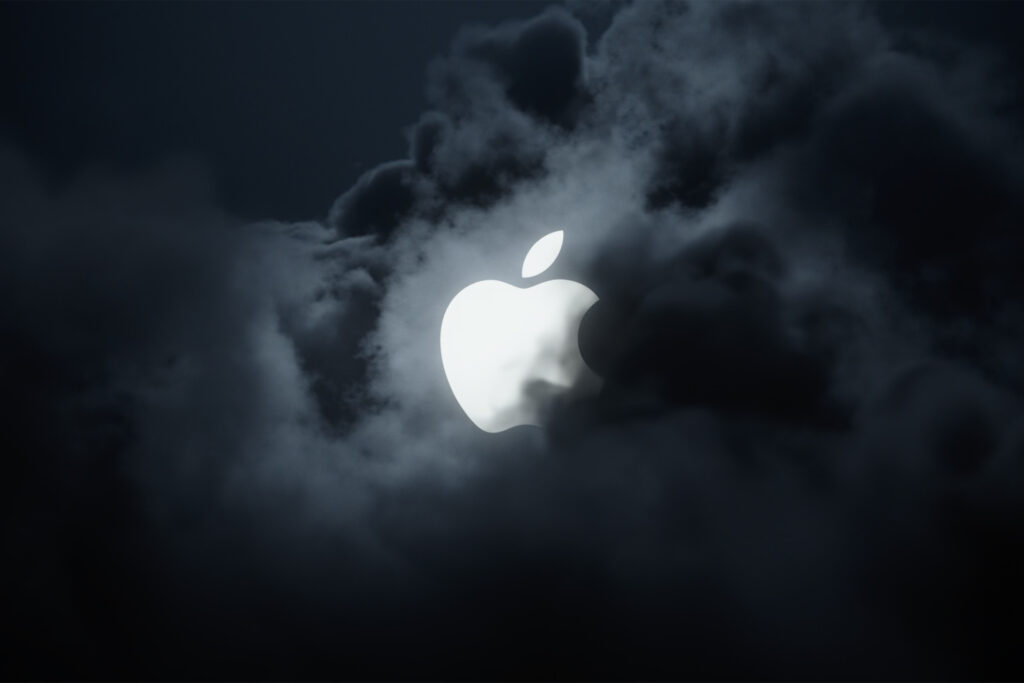How Apple can handle Trump’s tariffs without raising prices (too much)

Apple is one of the world’s most valuable and powerful companies, offering some of the world’s most popular products. And yet, with the stroke of a sharpie, a raft of U.S. tariffs threatens its entire business. Life comes at you quick.
Speculation says that the prices of Apple products are headed up. Apple Stores are crowded with buyers who are trying to beat the anticipated price increases. But while prices are probably going up, that’s only one of the many levers Apple can pull in order to deal with the tariff situation. Here’s a look at what the company might do to mitigate the tariff issue as much as possible.
Eat into profit margins
Here’s something Apple could do to deal with tariffs: hold prices steady and let all the added costs eat into its profit margins. It will never, ever do that because no company prizes its profit margins more than Apple, but it’s certainly an option. At the very least, there’s a short-term option for Apple to mitigate some of the tariff expenses by reducing product profit margins, at least temporarily.
Let’s put this in perspective: Apple’s reported products gross margin last quarter was 39.3 percent, the highest it’s been in recent memory. Obviously, margin varies by product, but Apple is one of the world’s most profitable companies because it has enormous profit margins. (That’s why they call it money!)
Connor Jewiss / Foundry
Every time I read about a billionaire sports team owner refusing to pay players, I am reminded that rich folks didn’t get rich by spending all their money. Similarly, Apple didn’t get where it is by cultivating a culture of acceptable hits to its profit margin. Any proposal to allow those margins to drop is going to be fought off like a body rejecting a virus.
And yet… it’s a tool in Apple’s arsenal. As I wrote above, it’s a short-term option, and taking less profit to smooth out pricing is definitely an option, but in the long term, Apple is going to want its profits.
Play a shell game
Apple doesn’t just make products in China. It makes iPhones in India and Brazil and has been moving more production of various products to Malaysia, Thailand, and Vietnam. Different countries have different tariff levels, so Apple can redirect its production to minimize tariffs in the U.S.
As the Wall Street Journal reported, Apple is planning to send the U.S. more iPhones from India (26 percent tariff) rather than China (54 percent). Apple also makes a small number of phones in Brazil (10 percent tariff), but might be tempted to ramp up production there.
For all products that are manufactured in more than one location, Apple will be able to change the flow of those products to optimize its profits. If it’s cheaper overall to send the entire factory output from Brazil to the United States and then import phones into Brazil, it could choose to do so.
The problem, of course, is that getting these plants up and running takes time, and it’s really only been since the pandemic that Apple has stepped up efforts to diversify its manufacturing and assembly operations beyond China. Apple can play a shell game with product shipments, sending those over there while these others come over here, but it can’t make new assembly plants spring up overnight.
Raise prices
For a company that makes huge profits, Apple actually hates changing the prices of its products. The iMac has almost always cost $1,299. The last time there was a major iPhone price hike, it was cloaked behind the splitting of the line between the more expensive iPhone X and the iPhone 8. (That split is basically the split between the iPhone 16 and iPhone 16 Pro today.)
Or take the MacBook Air, which Apple really wants to start at $999. When the M2 Air arrived, it carried so much new tech inside that the company had to price it at $1,199–and so it kept older models around for years until, with the M4 Air, it could finally get the new model’s base price down to $999. Yes, Apple reaps huge profits from its products, especially from all the add-on options that elevate products above their base configurations, but it sees enormous value in price floor stability. That’s what the impact of tariffs is threatening to dislodge.
Apple hasn’t raised the price of products like the iMac in some time.
Foundry
Thanks to inflation, though, the net result of Apple’s solid pricing floors is that its products have actually cost less over time. As pointed out by Ben Thompson, the real-price cost of a new iPhone has gone from $799 in 2020 dollars to $657 as of last fall. If Apple were to simply re-price its products to reclaim all the value lost to inflation since 2020, the iPhone 16 would start at $980, and the MacBook Air would start at $1,226.
That’s probably asking too much of consumers, but it would be very easy for Apple to raise everything by 10 to 20 percent and reclaim some of the tariff cost.
However, I’d be surprised if Apple re-prices its existing products while they’re on store shelves. In other markets, Apple has tried hard to keep its prices from floating based on the vagaries of foreign exchange rates. Yes, repricing has happened from time to time, but it always feels more like the exception that proves the rule.
It’s more likely that as Apple introduces new versions of existing products, it’ll do so at higher starting prices. So this fall, the rumored M5 MacBook Pro and iPad Pro would start a bit higher than they do today.
Another option Apple has used to cloak price increases is to eliminate old base configurations so that the new base has a higher price with a larger margin built in. This is what happened with the iPhone 15 Pro Max, which eliminated the prior year’s $1,099 Pro Max option with 128GB of storage, making the $1,199 model with 256GB of storage the base. An extra 128GB of storage doesn’t cost anywhere near $100, so that change instantly boosted the minimum profit Apple made from any iPhone Pro Max sold.
Over the next year, as Apple adjusts to tariffs and inflation, expect some combination of regular price increases and the removal of low-spec options.
Work the refs
Apple’s top strategy goal during this process isn’t about pricing or manufacturing; it’s about politics. During the first Trump administration, Tim Cook worked hard to ensure that the White House knew about Apple’s issues with international trade policy, and it worked pretty well for Apple. This administration sure seems different, but Cook is going to earn his money trying to argue for conditions that are more favorable to Apple.
And while everything happening right now seems really chaotic and unpredictable, I will say that it’s generally quite hard for a President of the United States to be perceived as harming great American businesses that dominate across the globe, especially if it favors foreign companies (like Samsung) that manufacture their products in more favorable tariff environments.
TIm Cook might have to work extra hard with President Trump to come up with a way to handle the tariffs.
Apple
Part of that negotiation will involve Apple doing what it’s already been doing since 2016, demonstrating its commitment to American industry and building campuses and manufacturing facilities and the like, and probably offering photo ops where Trump can claim victory and show that his policies are making a difference. Is that cynical? Well, yeah, but that’s politics.
None of us can predict where this is all going, but I’d expect at least some relaxation of these policies in areas where the administration can declare victory. Apple’s political goal will be to provide those opportunities so that it can get out from under the most onerous of the tariffs.
Play the longest game
Tim Cook has built Apple into a tech giant by optimizing the supply chain and manufacturing, relying primarily on China. It’s all gone well so far, but if the international economy changes so much that its largest market is no longer accessible from that supply chain, changes are going to have to be made. Hovering over all of this is also the fact that Apple’s chip supplier is in Taiwan, and any war over Taiwan would be ruinous for both Taiwan and U.S.-China relations.
There’s no way to predict the future, and sure, this might all blow over–but would you bet on that if you were Tim Cook? While Cook will likely be prompted to make some showy gestures to get what he wants out of the U.S. administration, he’s also got to make some tough and expensive decisions that have real long-term consequences. If Apple has the will, it’s one of the few companies that could make a real impact in terms of American production capacity, as well as building up capacity in other countries in order to reduce its reliance on a single market. It can’t mitigate all its risk, but it could spend a lot of money to reduce it at least somewhat.
This is the long game, though. It’ll likely be measured in decades. But Apple is not a company known for thinking bigger and more long-term than a lot of its competitors. Tim Cook’s final legacy as Apple CEO may be how he starts to unravel the efficient, China-focused manufacturing machine he spent two decades building.


